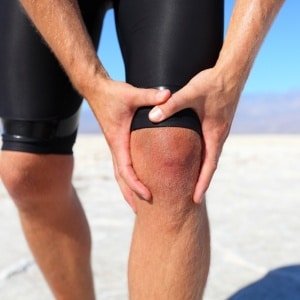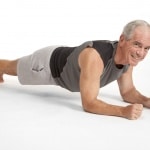February 2019
Just a Spoonful of Protein Helps the Knee Replacement Patient
A University of Oregon study asked the question whether the supplementation of essential amino acids (EAA), the building blocks of protein, would safely help older total knee replacement (TKR) patients maintain leg muscle mass. The typical response to TKR is further atrophy of the thigh muscles, which delays functional recovery.
They randomly assigned 39 middle-age and older adults preparing for a TKR to take either a placebo or 20 grams of high-quality EAA twice daily, between meals, starting one week pre-surgery and continuing for 6 weeks post-surgery. Patients were tested by MRI to gage muscle tissue changes in size, muscle strength and functional mobility 2 – 6 weeks pre-and 6 weeks post-surgery. Blood chemistry was also tested to see if any adverse responses to the EAA were occurring.
Both groups experienced substantial atrophy. Quadriceps atrophy was greater in the placebo group (~13.4%) vs the EAA group (~8.5%); even the non-surgical leg atrophied, but way less in the EAA group. The hamstrings atrophied more in the placebo group (~12.2%) vs the EAA group (~7.4%). Thus, taking protein supplements safely prevented about 1/3 the muscle mass loss that would normally be experienced by TKR patients that first 6 weeks.
Despite what most fitness professionals might think regarding atrophy and strength, there were comparable declines in both groups in quadriceps and hamstrings strength and in functional mobility. The authors conclude that the muscle sparing benefits of taking EAA might not show strength and function benefits for several more weeks.
JBJS June 2018
The Exercise-Sleep Connection: Bidirectional or Bipolar?
Australian researchers attempted to determine if the bidirectional relationship of physical activity (PA) and sleep quality and duration (SQ and SD) is causal or correlational. Mailed surveys to 3649 middle-to-old age Aussies over a two year period assessed the amount of and changes in PA, SQ and SD they regularly achieve. Of course, self-reported data of this nature is always suspect, but with a grain of salt does offer something to publish.
The data showed that the cause and effect of both PA and SQ was reciprocal: the more PA, the better the SQ; the better the SQ, the more PA. Likewise, changes in PA were not associated with changes in SD, or vice versa. Furthermore, it showed that some subjects shifted behaviors, becoming less or more active, and having worse or better sleep behaviors. Twenty percent had sub-optimal or shifting SD from optimal to sub-optimal or vice versa; 60% remained optimal. Overall, a small percentage were sub-optimal in all three indices and fewer than 10% were highly active and optimal in SQ and SD.
In sum, the bidirectional relationships of PA and elements of sleep behavior could not be identified as causal in either direction. One could say it was a bipolar one in that there are many for whom one behavior is decoupled from the others. “Remaining physically active was positively associated with increased SQ or maintaining good SQ, and painting good SQ or increasing SQ were associated with either remaining physically active or increasing PA”, the authors concluded. And it may help control body weight, too.
MSSE Dec. 2018
Tid Bits
A recent study demonstrated the potential value of dynamic stretching of the hamstrings prior to a strength or power movement that might prevent activity-related injury. Compared to the use of a foam roller prior to activity, dynamic stretching apparently shift the length (of the muscle)-strength curve such that it does not lose strength as it lengthens. Thus it may not over-stress the tissues during eccentric contractions. JSCR Aug. 2018
A US study attempted to answer the question as to which type of protein was best as a post-workout supplement. That is, did beef, chicken or whey protein help with strength gains and body composition changes from an 8-week resistance training program? They found that fat loss was similar for all groups (about 1-1.5 kg), lean muscle mass gain was similar (about 2-3 kg) and maximum strength gains were similar. Thus, 2 servings of a meat or whey protein (46 grams) after a workout seem to yield similar benefits from a 3 day/wk strength training program. JSCR Aug. 2018
Science has a way of saying, “I told you so” or “Duh”. In this study, the authors measured the biomechanics of experienced young (early-mid 30s) and old (mid 60s) runners. Subjects ran at the same speed of 7.5 mph (8 mins/mile) with 9 cameras filming marked segments of their lower extremities. They calculated foot strike forces, vertical and joint stiffness values and their underlying components. And, yes, the youngsters had less vertical stiffness (more spring-like) with more dynamic joint stiffness at the ankles and knees. The olders had less ankle plantar flexion and knee extension forces, with shorter steps, demonstrating that advancing age is associated with biomechanics that reduce speed and loading forces on the muscles and joints. MSSE Dec. 2018
















